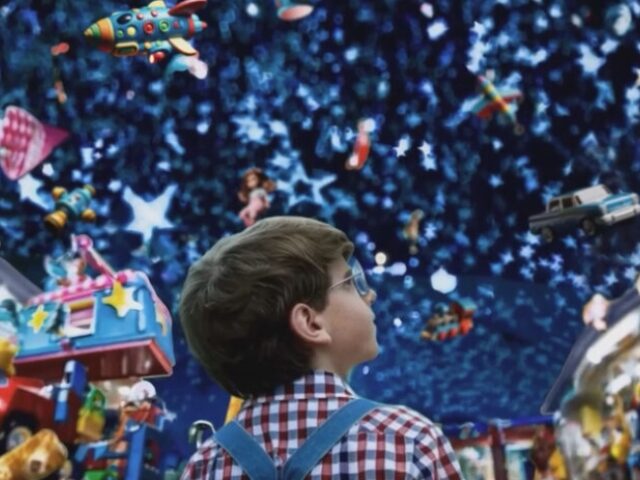Toys “R” Us has partnered with ad agency Native Foreign to create what they claim is the first-ever “brand film” utilizing OpenAI’s new text-to-video tool, Sora. The creepy result has largely been mocked on social media.
Ars Technica reports that the retail giant Toys “R” Us has taken a surprising step into the future of advertising by leveraging OpenAI’s text-to-video technology, Sora, to produce a unique commercial. Titled “The Origin of Toys ‘R’ Us,” the commercial aims to tell the story of the company’s founder, Charles Lazarus, through AI-generated video clips. This creative endeavor showcases the potential of Sora, which can create up to one-minute-long videos featuring realistic scenes and multiple characters, all generated from text instructions.
Kim Miller Olko, Toys “R” Us Studios President and executive producer of the project, expressed excitement about the collaboration, stating, “Charles Lazarus was a visionary ahead of his time, and we wanted to honor his legacy with a spot using the most cutting-edge technology available.”
The video depicts a child version of Lazarus, presumably generated by Sora, falling asleep and embarking on a journey through a dreamland of toys. During this adventure, the young Lazarus encounters Geoffrey, the iconic Toys “R” Us mascot, who presents him with a small red car – a symbolic gesture representing the birth of a retail empire.
While the use of AI in advertising is not entirely new, the Toys “R” Us commercial represents a significant leap forward in terms of complexity and ambition. However, the video is not without its telltale signs of AI generation. Keen observers have noted unnatural movements, strange visual artifacts, and irregularities in certain elements like eyeglasses – all hallmarks of current AI-generated imagery.
The reception of this AI-generated commercial has been mixed, with some praising its innovative approach while others criticize various aspects of its production and implications. Critics have raised concerns about the potential displacement of human creative jobs, the environmental impact of energy-intensive AI models, and the use of human-created artwork to train these AI systems.
Comedy writer Mike Drucker encapsulated several of these criticisms in a post on social media platform X, saying, “Love this commercial is like, ‘Toys R Us started with the dream of a little boy who wanted to share his imagination with the world. And to show how, we fired our artists and dried Lake Superior using a server farm to generate what that would look like in Stephen King’s nightmares.’”
Despite the criticism, it’s important to note that the creation of this brand film still required significant human input. While Sora eliminated the need for actors and cameras, the process still involved human scriptwriters and VFX artists to refine and enhance the AI-generated content. Toys “R” Us acknowledged this in their press release, stating, “The brand film was almost entirely created with Sora, with some corrective VFX and an original music score composed by Aaron Marsh of famed indie rock band Copeland.”
This hybrid approach of AI generation and human post-production is not unique to the Toys “R” Us project. Other high-profile Sora-generated videos, such as the short film “Air Head” by shy kids, have also required extensive human intervention to achieve the desired results. Mike Seymour of fxguide reported that the creation of “Air Head” involved a substantial amount of editing and post-production work, including the removal of unwanted elements and artifacts from the AI-generated footage.
As the technology continues to evolve, some industry insiders predict that AI-generated content will become increasingly prevalent in advertising. Dan Goldgeier, an advertisement copywriter, commented on social media, “Mock that Toys ‘R’ Us AI spot all you want — but it’s just the beginning. Most consumers won’t know the difference or care, and most marketers will be more than happy to make this kind of spot for less money.”
Read more at Ars Technica here.
Lucas Nolan is a reporter for Breitbart News covering issues of free speech and online censorship.

COMMENTS
Please let us know if you're having issues with commenting.